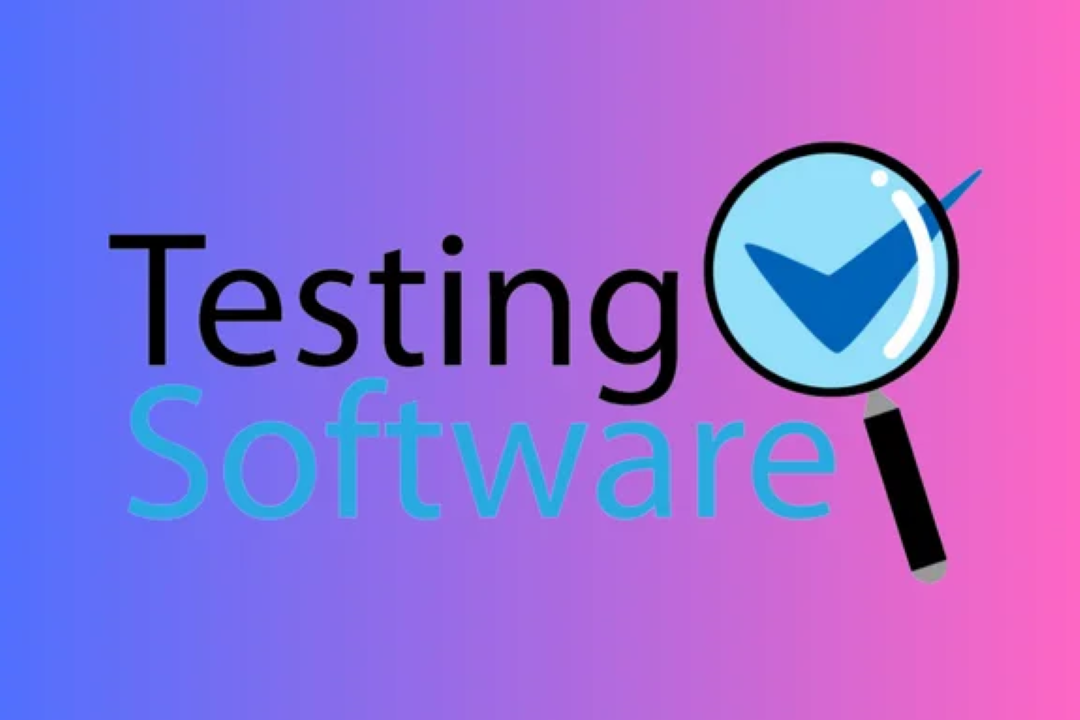Flutter Vs React Native Vs Xamarin Vs Ionic
Flutter, React Native, Xamarin, and Ionic are popular frameworks for mobile app development, each ca
Flutter Vs React Native Vs Xamarin Vs Ionic
When comparing Flutter, React Native, Xamarin, and Ionic, each framework offers unique advantages for mobile app development. Flutter stands out for its fast performance and rich, customizable UI components, ideal for creating visually appealing applications with a single codebase. React Native excels in building apps with a native look and feel, leveraging JavaScript and reusable components, making it a go-to choice for web developers transitioning to mobile. Xamarin, backed by Microsoft, provides robust performance with a strong focus on C# and .NET, allowing for easy code sharing across multiple platforms while maintaining native functionality. Ionic, on the other hand, is perfect for developers familiar with web technologies, as it enables hybrid app development using standard web languages, allowing for rapid deployment across platforms. Choosing the right framework depends on project requirements, team expertise, and desired user experience.
To Download Our Brochure: https://www.justacademy.co/download-brochure-for-free
Message us for more information: +91 9987184296
When comparing Flutter, React Native, Xamarin, and Ionic, each framework offers unique advantages for mobile app development. Flutter stands out for its fast performance and rich, customizable UI components, ideal for creating visually appealing applications with a single codebase. React Native excels in building apps with a native look and feel, leveraging JavaScript and reusable components, making it a go to choice for web developers transitioning to mobile. Xamarin, backed by Microsoft, provides robust performance with a strong focus on C# and .NET, allowing for easy code sharing across multiple platforms while maintaining native functionality. Ionic, on the other hand, is perfect for developers familiar with web technologies, as it enables hybrid app development using standard web languages, allowing for rapid deployment across platforms. Choosing the right framework depends on project requirements, team expertise, and desired user experience.
Course Overview
The “Flutter vs React Native vs Xamarin vs Ionic” course offers an in-depth exploration of four leading mobile app development frameworks, equipping learners with essential knowledge to choose the right tool for their projects. Participants will dive into hands-on comparisons of each framework's strengths and weaknesses, such as performance, UI capabilities, platform support, and community resources. By engaging in real-time projects, students will not only understand the theoretical differences but also gain practical experience in building applications using Flutter, React Native, Xamarin, and Ionic. This comprehensive course is designed for aspiring developers, enabling them to make informed decisions and enhance their mobile app development skills effectively.
Course Description
The “Flutter vs React Native vs Xamarin vs Ionic” course provides an extensive comparison of four prominent mobile app development frameworks, empowering participants to make informed choices for their projects. This course covers key features, advantages, and drawbacks of each framework while focusing on performance, user interface design, and platform compatibility. Through engaging real-time projects, learners will gain hands-on experience and practical skills, enabling them to develop high-quality mobile applications efficiently. Ideal for aspiring developers and tech enthusiasts, this course is designed to enhance your understanding of modern mobile development and prepare you for the challenges of the industry.
Key Features
1 - Comprehensive Tool Coverage: Provides hands-on training with a range of industry-standard testing tools, including Selenium, JIRA, LoadRunner, and TestRail.
2) Practical Exercises: Features real-world exercises and case studies to apply tools in various testing scenarios.
3) Interactive Learning: Includes interactive sessions with industry experts for personalized feedback and guidance.
4) Detailed Tutorials: Offers extensive tutorials and documentation on tool functionalities and best practices.
5) Advanced Techniques: Covers both fundamental and advanced techniques for using testing tools effectively.
6) Data Visualization: Integrates tools for visualizing test metrics and results, enhancing data interpretation and decision-making.
7) Tool Integration: Teaches how to integrate testing tools into the software development lifecycle for streamlined workflows.
8) Project-Based Learning: Focuses on project-based learning to build practical skills and create a portfolio of completed tasks.
9) Career Support: Provides resources and support for applying learned skills to real-world job scenarios, including resume building and interview preparation.
10) Up-to-Date Content: Ensures that course materials reflect the latest industry standards and tool updates.
Benefits of taking our course
Functional Tools
1 - Flutter
Flutter is an open source UI toolkit developed by Google for building natively compiled applications across mobile, web, and desktop from a single codebase. It uses the Dart programming language, which is known for its performance and ease of use. Flutter’s widget based architecture allows developers to create highly responsive and visually attractive UIs. It includes a rich set of pre designed widgets and extensive documentation, making it beginner friendly. Additionally, Flutter provides hot reload functionality, enabling developers to see real time changes in their applications, significantly speeding up the development process.
2) React Native
React Native, developed by Facebook, is a widely adopted framework for building cross platform mobile applications using JavaScript. It allows developers to write native code for both iOS and Android platforms, leveraging React’s component based architecture. React Native offers a robust ecosystem and a rich library of third party plugins, which enhances functionality without compromising performance. The framework also supports hot reloading, facilitating rapid development and debugging. With strong community support and extensive documentation, React Native remains a popular choice for developers looking to create high quality mobile applications.
3) Xamarin
Xamarin is a Microsoft owned framework that enables developers to build native applications for Android, iOS, and Windows using C#. It provides a single codebase that can be shared across platforms, coupled with access to native APIs and tools. Xamarin integrates seamlessly with Visual Studio, offering powerful development tools, debugging features, and a sophisticated IDE. Additionally, Xamarin.Forms allows for creating high performance UIs with minimal code duplication, catering specifically to shared UI code across platforms. This framework is well suited for developers familiar with the Microsoft ecosystem and looking for extensive native functionality.
4) Ionic
Ionic is an open source framework for building hybrid mobile applications using web technologies such as HTML, CSS, and JavaScript. It is designed for developing cross platform apps with a single codebase, offering a library of mobile optimized UI components. Ionic utilizes Apache Cordova to access native device features, ensuring that applications can run seamlessly across platforms. It also features Capacitor, a native implementation that allows developers to integrate web based and native applications effectively. The framework is particularly appealing for web developers transitioning into mobile app development due to its familiar web technology stack.
5) Development Tools and IDEs
For all four frameworks, various integrated development environments (IDEs) can be utilized to enhance the development experience. Flutter can be used with Android Studio and Visual Studio Code, providing powerful features such as auto completion and debugging tools. React Native development can be streamlined through tools like Expo, which facilitates easier setup and testing of apps. Xamarin developers often rely on Visual Studio, known for its rich development environment tailored for C#. Ionic developers can leverage Visual Studio Code or their preferred text editor, utilizing plugins to enhance productivity. The choice of IDE can significantly impact the efficiency and effectiveness of the development process.
6) Testing and Debugging Tools
Each framework offers a range of testing and debugging tools to ensure high quality applications. Flutter includes a testing framework that supports unit testing, widget testing, and integration testing, helping maintain app reliability. React Native provides tools such as Jest for unit tests and React Test Library for component testing. Xamarin comes with testing frameworks like NUnit and Xamarin.UITest for automated UI testing, which guarantees that applications function as intended. Ionic supports tools like Cypress and Protractor for end to end testing, allowing developers to automate the testing of their applications. Accessible testing tools within these frameworks promote best practices and enhance the overall development process.
Here are more detailed points to consider for each framework along with additional content related to development tools, testing/debugging tools, and community support:
- Flutter
- High Performance: Flutter compiles to native ARM code, which enhances performance significantly compared to other cross platform frameworks that rely on web views.
- Customizable Widgets: It offers a comprehensive set of pre designed widgets that can be customized easily. This allows for creative freedom in designing interfaces.
- Strong Community Support: A vibrant community constantly contributes packages and plugins to the Flutter ecosystem, providing solutions to common challenges.
- Integration with Firebase: Flutter integrates seamlessly with Firebase, a platform for building apps that provides analytics, cloud storage, and hosting services.
- Platform Specific APIs: Flutter allows developers to invoke platform specific APIs using platform channels, giving access to native features for Android and iOS.
- Dark Mode Support: Flutter has built in support for implementing dark mode, enabling easy adaptation of apps for users based on their preferences.
2. React Native
Live Reload: The Live Reload feature instantly reloads the app when changes are made, providing a real time feedback loop for developers.
Proximity to Native Look and Feel: React Native provides a native performance level similar to pure native apps. It translates React components into native UI components.
Large Third Party Library: The ecosystem is rich with third party libraries such as Redux for state management and React Navigation for navigating between screens.
Hot Reloading: Facilitates a faster development cycle by allowing developers to tweak their code and see changes without recompiling the entire app.
Support for Web Development: With React Native Web, developers can use the same codebase for web applications, promoting code reuse across platforms.
Strong Backing and Resources: Backed by Facebook, React Native has extensive resources, documentation, and tutorials making it easy for newcomers to learn.
3. Xamarin
Native API Access: Xamarin provides access to platform specific APIs, allowing developers to use native features seamlessly within their apps.
Cross Platform UI Design: Xamarin.Forms enables developers to create user interfaces that work across different platforms with a shared UI code.
Enterprise Support: With Microsoft's backing, Xamarin is often favored in enterprise environments, providing necessary resources and tools for business applications.
Integration with Azure: Xamarin works well with Microsoft Azure, allowing developers to leverage cloud services like database storage, serverless functions, and responsive backends.
Shared Codebase: Developers can share up to 90% of their code across iOS and Android platforms, significantly reducing development time and effort.
Consistent User Experience: Xamarin offers the capability to create a consistent user experience across platforms while maintaining the native look and feel of individual platforms.
4. Ionic
Progressive Web App (PWA) Support: Ionic can be used to create Progressive Web Applications, which offer a more native like experience in web browsers.
Fast Prototyping: The rapid development capability allows for quick prototyping and development of applications, beneficial for startups and small projects.
Focused on UI: The rich library of UI components enables the creation of aesthetically pleasing and interactive interfaces with ease.
Capacitor for Native Features: Capacitor allows developers to call native SDKs directly from JavaScript, enhancing functionality.
Active Community and Plugins: The Ionic community regularly contributes plugins that extend the functionality of applications, making it easier for developers to integrate various features.
Theming: Built in theming options allow developers to customize applications' appearance extensively, supporting branding and design requirements.
Development Tools and IDEs
Visual Studio Code: This lightweight code editor is highly popular for its rich set of extensions compatible with multiple frameworks, including Flutter, React Native, Xamarin, and Ionic.
Android Studio: Specifically tailored for Android development, it’s ideal for Flutter and Xamarin, providing tools for UI design and performance analysis.
Xcode: Essential for iOS development, Xcode can be used in conjunction with these frameworks, especially for testing and packaging applications.
Command Line Interface (CLI): Each framework provides a robust CLI for creating, building, running, and testing applications, enhancing developer efficiency.
Testing and Debugging Tools
Integration Testing: For Flutter, integration testing allows developers to test widget interactions and functionality as a complete app.
React DevTools: This browser extension helps developers inspect the React component hierarchies, making it easier to debug.
Xamarin Test Cloud: Allows developers to test their applications on real devices directly in the cloud, ensuring comprehensive testing scenarios.
Protractor for Ionic: This end to end testing framework for Angular helps ensure that Ionic applications work correctly in all scenarios.
Automated UI Testing: Frameworks like Appium and Selenium can be utilized across all platforms to automate UI testing processes.
Community Support
Community Forums and Events: Each framework has dedicated community forums and regular meetups or online events allowing developers to collaborate and share knowledge.
Extensive Documentation: Well organized documentation makes it easy for developers to find the information they need for implementation.
Open Source Contributions: Many frameworks are open source, allowing developers to contribute to their development, thus improving features and fixing issues collaboratively.
These additional points provide a deeper understanding of each framework's strengths and viability for modern application development, along with tools that can enhance productivity and community engagement.
Browse our course links : https://www.justacademy.co/all-courses
To Join our FREE DEMO Session: Click Here
This information is sourced from JustAcademy
Contact Info:
Roshan Chaturvedi
Message us on Whatsapp: +91 9987184296
Email id: info@justacademy.co












